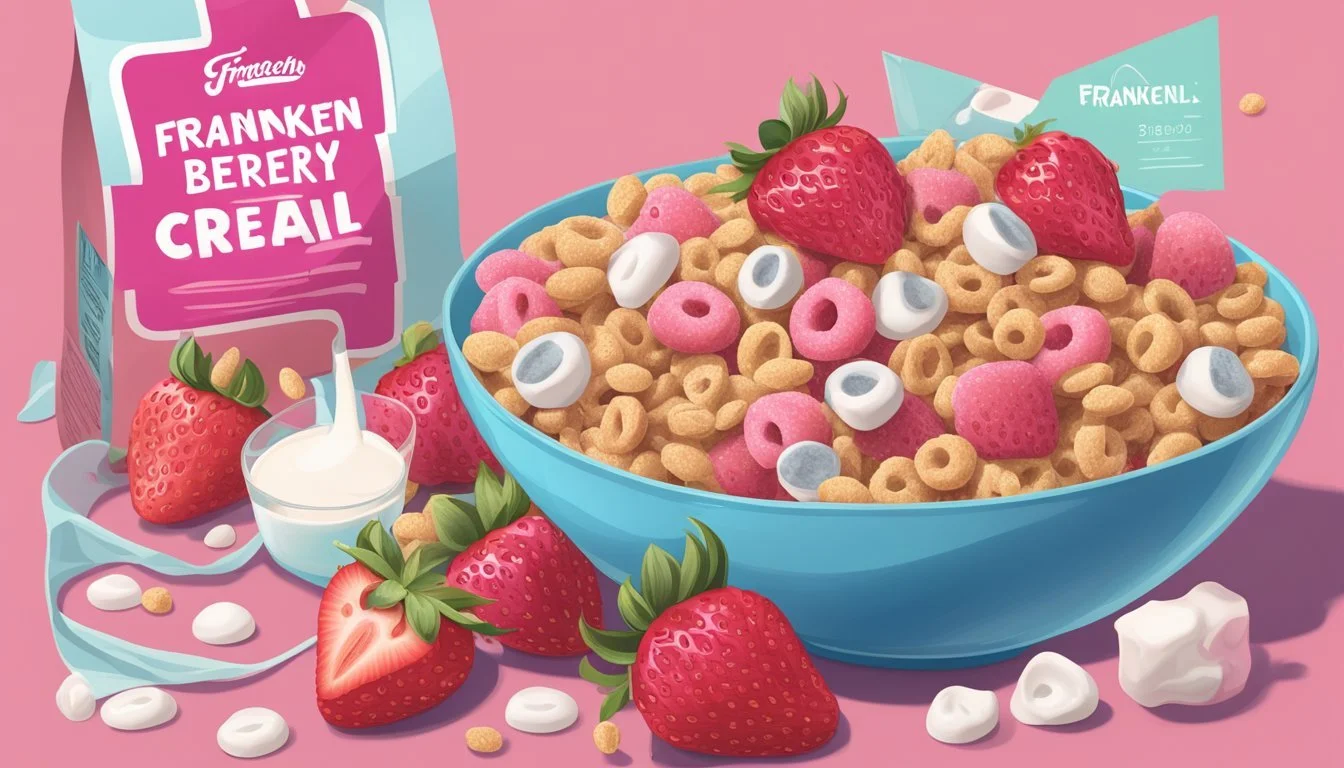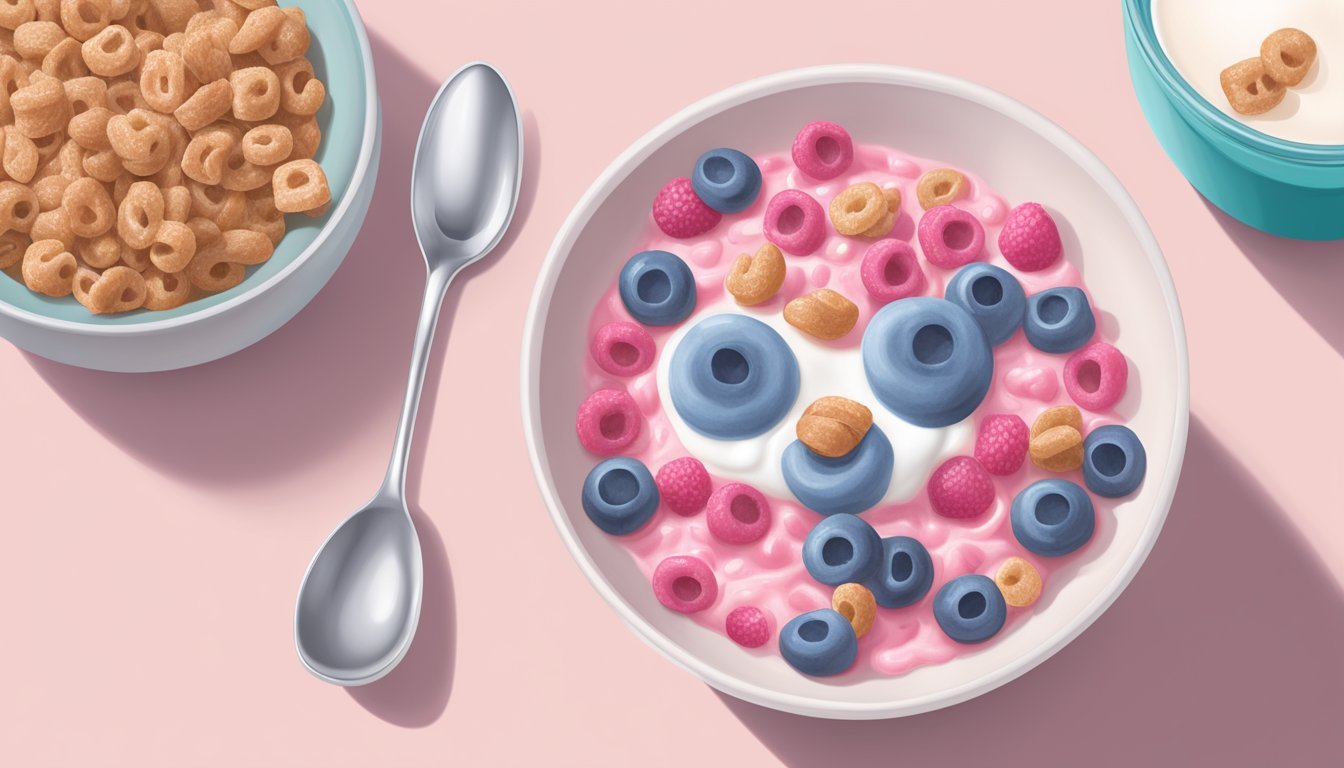Franken Berry Nutrition Facts & More
A Balanced Look at the Monster Cereal's Health Profile
Franken Berry, the beloved strawberry-flavored cereal from General Mills, has been a breakfast favorite since its introduction in 1971. This vibrant pink cereal, adorned with marshmallow pieces, offers a unique taste experience for those with a sweet tooth.
A single cup serving of Franken Berry cereal contains approximately 130 calories, with 87% of those calories coming from carbohydrates, 10% from fat, and 3% from protein. The nutrition facts reveal that it provides essential vitamins and minerals, including iron, vitamin A, and vitamin B6.
While Franken Berry may not be considered a health food due to its sugar content, it can be enjoyed in moderation as part of a balanced diet. Its eye-catching color and monster-themed marketing have made it a popular choice among children and adults alike, especially during the Halloween season.
Nutritional Profile
Franken Berry cereal provides a mix of carbohydrates, vitamins, and minerals. The nutritional content varies slightly depending on serving size and brand formulation.
Macronutrients
A 1 cup (33g) serving of Franken Berry cereal contains approximately 130 calories. The majority of these calories come from carbohydrates, which make up about 85-87% of the total macronutrient content.
Protein contributes only 3-5% of the calories, while fat accounts for 10%. The cereal contains 1-1.4g of total fat per serving, with minimal saturated fat (0.2g) and no trans fat.
The total carbohydrate content is around 28-30g per serving. Added sugars likely make up a significant portion of the carbohydrates, though exact amounts may vary by formulation.
Vitamins and Minerals
Franken Berry is fortified with several vitamins and minerals. A single serving provides about 25% of the daily value for iron. It also contains approximately 15% of the daily value for vitamin A.
Vitamin B6 is present in notable amounts, with one serving supplying around 29% of the daily value. Other B vitamins, such as folate and vitamin B12, are likely included in the fortification mix.
The cereal may contain small amounts of calcium and vitamin C, though specific percentages are not provided in the available nutritional data. Potassium, vitamin D, vitamin E, and vitamin K content is not explicitly mentioned in the search results.
Ingredient Analysis
Franken Berry cereal contains a mix of grains, sugars, and additives that contribute to its unique taste and appearance. The ingredients work together to create the familiar pink-hued breakfast cereal with marshmallow pieces.
Cereal Composition
Whole grain corn forms the base of Franken Berry cereal, providing fiber and some nutrients. Sugar is a prominent ingredient, giving the cereal its sweet taste. The cereal pieces are flavored and colored to resemble strawberries, though they contain no real fruit. Marshmallow bits add extra sweetness and a fun texture.
The cereal contains several types of sugar, including sucrose, corn syrup, and dextrose. These simple carbohydrates contribute to the high sugar content - about 9 grams per 33-gram serving.
Additives and Enhancers
Artificial colors give Franken Berry its distinctive pink hue. Red 40 is likely used to achieve the strawberry-like color. The cereal also contains artificial flavors to mimic a strawberry taste.
Various vitamins and minerals are added to fortify the cereal. These typically include iron, B vitamins like thiamin and riboflavin, and sometimes vitamin D. Salt enhances flavor, while preservatives help maintain freshness.
Corn syrup solids and modified corn starch may be used as binding agents or to improve texture. Trisodium phosphate serves as a preservative and pH regulator in the cereal.
Dietary Considerations
Franken Berry cereal presents some important nutritional factors to consider. Its ingredients and nutrient profile impact its suitability for various diets and health needs.
Allergens and Restrictions
Franken Berry contains wheat and corn, making it unsuitable for those with gluten sensitivities or celiac disease. The cereal is dairy-free, nut-free, and egg-free, which benefits individuals with these common food allergies. It's important to note that Franken Berry contains artificial colors and flavors, which some people choose to avoid.
For those monitoring their sugar intake, Franken Berry's high sugar content (9g per 33g serving) may be a concern. The cereal also contains corn syrup and dextrose, contributing to its total sugar content.
Diet Compatibility
Franken Berry is not ideal for low-carb or ketogenic diets due to its high carbohydrate content (27g per serving). The cereal's low fiber content (1g per serving) makes it less suitable for high-fiber diets.
For those following a vegan or vegetarian diet, Franken Berry is a compatible option as it contains no animal-derived ingredients. However, its nutritional profile may not align with whole food plant-based diets due to its processed nature and added sugars.
The cereal is low in fat (1.4g per serving) and cholesterol-free, which may appeal to those on low-fat diets. Its sodium content (180mg per serving) is moderate, making it acceptable for most sodium-restricted diets when consumed in moderation.
Consumption and Serving Suggestions
A typical serving size of Franken Berry cereal is 1 cup (33 grams). This serving provides approximately 130 calories and 27 grams of carbohydrates.
Franken Berry is commonly enjoyed as a breakfast cereal with cold milk. For a balanced meal, pair it with fresh fruit and a source of protein like yogurt or eggs.
To control portions, use a measuring cup when serving. This helps ensure you're consuming the recommended amount and not exceeding daily calorie goals.
For a fun twist, try Franken Berry as a topping for yogurt or ice cream. It can also be used in trail mix or as a crunchy addition to homemade granola bars.
Keep in mind that Franken Berry, like many sweetened cereals, is relatively high in sugar. Moderation is key when incorporating it into a balanced diet.
For those watching their sugar intake, mixing Franken Berry with a lower-sugar cereal can help reduce the overall sugar content while still enjoying its unique flavor.
Remember that Franken Berry should be part of a varied diet. It's not intended to meet all daily nutritional needs on its own.
Brand and Product Information
Franken Berry cereal is a well-known breakfast product from General Mills. This iconic monster-themed cereal has maintained popularity since its introduction in the 1970s.
General Mills' Legacy
General Mills launched Franken Berry in 1971 as part of its monster cereal line. The product features a strawberry-flavored corn cereal with marshmallow pieces. Franken Berry's pink color and mascot, based on Frankenstein's monster, make it visually distinctive on store shelves. The cereal is often sold alongside its monster cereal counterparts, including Count Chocula and Boo Berry.
General Mills has periodically updated Franken Berry's packaging and formula to keep it relevant. The cereal remains a nostalgic favorite for many consumers who grew up with the brand. Its availability varies, with some markets offering it year-round and others featuring it as a seasonal Halloween product.
Market Position
Franken Berry occupies a unique niche in the breakfast cereal market. While not as widely consumed as more traditional cereals, it maintains a dedicated fanbase. The product's appeal spans generations, attracting both children and adults who enjoy its sweet flavor and playful branding.
In recent years, General Mills has leveraged Franken Berry's cult status through limited-edition releases and cross-promotions. The cereal has inspired brand extensions, including Franken Berry-flavored snacks and beverages. Despite competition from newer cereal brands, Franken Berry continues to hold its own in the sugary cereal category.
General Mills does not publicly disclose specific sales figures for Franken Berry. However, the company's continued support of the brand suggests it remains a profitable part of their cereal portfolio.
Legal and Regulatory Compliance
The FDA regulates dietary supplements like Franken Berry cereal under the Dietary Supplement Health and Education Act of 1994. This law establishes specific guidelines for labeling and marketing these products.
Manufacturers must ensure their Nutrition Facts labels comply with FDA regulations. These labels must clearly state serving sizes, calorie counts, and nutrient content.
The FDA sets Daily Values for various nutrients. These values help consumers understand how a food fits into their overall diet. For Franken Berry, key nutrients like sugar, fiber, and vitamins are listed as percentages of Daily Values.
Cereal makers must adhere to strict rules regarding health claims on packaging. Any statements about nutrient content or health benefits must be supported by scientific evidence and approved by the FDA.
The FDA also monitors cereal production facilities to ensure safety and quality standards are met. Regular inspections help maintain compliance with Good Manufacturing Practices.
Companies producing cereals like Franken Berry must register with the FDA and report any serious adverse events associated with their products. This helps the agency monitor product safety and take action if necessary.








